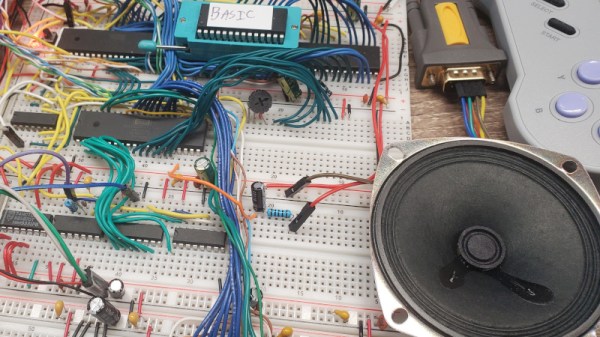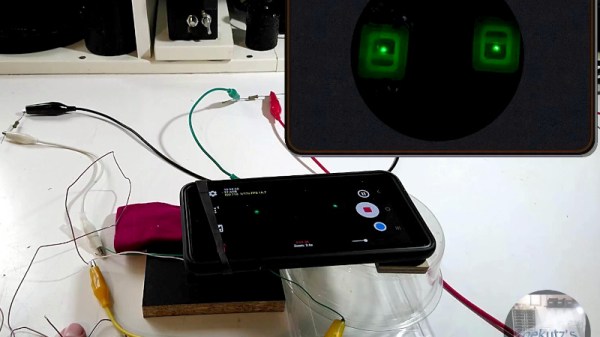Remember the Key Bridge collapse? With as eventful a year as 2025 has been, we wouldn’t blame anyone for forgetting that in March of 2024, container ship MV Dali plowed into the bridge across Baltimore Harbor, turning it into 18,000 tons of scrap metal in about four seconds, while taking the lives of six very unlucky Maryland transportation workers in the process. Now, more than a year and a half after the disaster, we finally have an idea of what caused the accident. According to the National Transportation Safety Board’s report, a loss of electrical power at just the wrong moment resulted in a cascade of failures, leaving the huge vessel without steerage. However, it was the root cause of the power outage that really got us: a wire with an incorrectly applied label.
Congratulations To The 2025 Component Abuse Challenge Winners
For the Component Abuse Challenge, we asked you to do the wrong thing with electrical parts, but nonetheless come out with the right result. It’s probably the most Hackaday challenge we have run in a long time, and you all delivered! The judging was tight, but in the end three projects rose up to the top, and will each be taking home a $150 DigiKey gift certificate, but that doesn’t mean you shouldn’t give all of the projects a look.
So without further ado, let’s check out the winners and all the others that tickled the hacky regions of our judges’ brains. Continue reading “Congratulations To The 2025 Component Abuse Challenge Winners”
Hackaday Links: November 16, 2025
We make no claims to be an expert on anything, but we do know that rule number one of working with big, expensive, mission-critical equipment is: Don’t break the big, expensive, mission-critical equipment. Unfortunately, though, that’s just what happened to the Deep Space Network’s 70-meter dish antenna at Goldstone, California. NASA announced the outage this week, but the accident that damaged the dish occurred much earlier, in mid-September. DSS-14, as the antenna is known, is a vital part of the Deep Space Network, which uses huge antennas at three sites (Goldstone, Madrid, and Canberra) to stay in touch with satellites and probes from the Moon to the edge of the solar system. The three sites are located roughly 120 degrees apart on the globe, which gives the network full coverage of the sky regardless of the local time.
2025 Component Abuse Challenge: The VIA Makes Noise, Again
In the days of 8-bit home computing, the more fancy machines had sound chips containing complete synthesizers, while budget machines made do with simple output ports connected to a speaker — if they had anything at all. [Normal User] appears to be chasing the later route, making PCM sound by abusing the serial port on a 6522 VIA chip.
A serial port is when you think about it, a special case of a one-bit output port. It’s designed for byte data communication but it can also carry a PCM data stream. We’ve seen this used with microcontrollers and peripherals such as the I2S port plenty of times here at Hackaday, to produce such things as NTSC video. The 1970s-spec equivalent might not be as fast as its modern equivalent, but it’s capable of delivering audio at some level. The machine in question is a Ben Eater breadboard 6502 with a World’s Worst Video Card, and as you can hear in the video below the break, it’s not doing a bad job for the era,
If you think this hack sounds a little familiar then in a sense you’re right, because Ben Eater himself made noises with a 6522. However it differs from that in that he used the on-board timers instead. After all, the “V” in “VIA” stands for “versatile”.
Continue reading “2025 Component Abuse Challenge: The VIA Makes Noise, Again”
2025 Component Abuse Challenge: Relay Used As Guitar Pickup
We’ve all built projects that are a rats’ nest of wiring and feature creep, but the best projects in the end are usually those that use a simple solution to elegantly solve a problem. [Kauz] had been thinking about a unique type of electric guitar pickup for a while and rather than purchase an expensive option or build a complex microcontroller-based system he found his elegant solution in the form of a common electronic component.
The core of this idea is that guitar pickups are essentially coils of wire, and are surprisingly similar to the coils of wire found in electromechanical relays. [Kauz] has used six small relays, left them unmodified, and then built an amplifier circuit for each to allow the vibrations of the guitar strings to resonate in the relay coils, eventually producing a sound. Not only do the relays work perfectly well as pickups, but [Kauz] also created a mixing board that allows the six relays to be combined into two channels, allowing for options like stereo sound for different strings directly out of the guitar or for different effects to be applied to different strings.
The build also allows for some interesting options in future versions as well. [Kauz]’s plans are eventually to build this into an instrument which can output polyphonic MIDI signals, where various strings can behave as different instruments. In theory, with six circuits six different instruments can be produced, and we’re excited to see what the next versions will look and sound like. In the meantime, be sure to check out some other guitar pickups we’ve seen that use even simpler parts found lying around the workbench.
Continue reading “2025 Component Abuse Challenge: Relay Used As Guitar Pickup”
2025 Component Abuse Challenge: Light An LED With Nothing
Should you spend some time around the less scientifically informed parts of the internet, it’s easy to find “Free power” stories. Usually they’re some form of perpetual motion machine flying in the face of the laws of conservation of energy, but that’s not to say that there is no free power.
The power just has to come from somewhere, and if you’re not paying for it there’s the bonus. [joekutz] has just such a project, lighting up LEDs with no power source or other active electronics.
Of course, he’s not discovered perpetual motion. Rather, while an LED normally requires a bit of current to light up properly, it seems many will produce a tiny amount of light on almost nothing. Ambient electromagnetic fields are enough, and it’s this effect that’s under investigation. Using a phone camera and a magnifier as a light detector he’s able to observe the feeble glow as the device is exposed to ambient fields.
In effect this is using the LED as the very simplest form of radio receiver, a crystal set with no headphone and only the leads, some wires, and high value resistors as an antenna. The LED is after all a diode, and it can thus perform as a rectifier. We like the demonstration even if we can’t quite see an application for it.
While we’re no longer taking new entries for the 2025 Component Abuse Challenge, we’ve still got plenty of creative hacks from the competition to show off. We’re currently tabulating the votes, and will announce the winners of this particularly lively challenge soon.
2025 Component Abuse Challenge: The Slip Ring In Your Parts Bin
If you’re familiar with electrical slip rings as found in motors and the like you’ll know them as robust assemblies using carefully chosen alloys and sintered brushes, able to take the load at high RPM for a long time. But not all slip ring applications need this performance. For something requiring a lot less rotational ability, [Luke J. Barker] has something from his parts bin, and probably yours too. It’s an audio jack.
On the face of it, a 1/4″ jack might seem unsuitable for this task, being largely a small-signal audio connector. But when you consider its origins in the world of telephones it becomes apparent that perhaps it could do so much more. It works for him, but we’d suggest if you’d like to follow his example, to use decent quality plugs and sockets.
This is an entry in our 2025 Component Abuse Challenge, and we like it for thinking in terms of the physical rather than the electrical. The entry period for this contest will have just closed by the time you read this, so keep an eye out for the official results soon.

















